by Richard Tuttle
When my wife and I decided to plant the ground under a few of our trees and shrubs, some friends suggested various fast-growing groundcovers like vinca or English ivy for these darker spots, but we knew how invasive they could be to surrounding beds or natural areas. Also, we were avid, if inexperienced perennial gardeners, and wanted to try out everything under the sun (or in this case, under the shade), but had limited areas beneath the few shade trees and large shrubs on our property. With a little research we soon learned that some of the trees that provided shade for us, namely silver and Norway maple, also had such dense and shallow root systems that growing anything under them, even lawn, would be a challenge.
In the remaining shady areas, we prepared our future shade beds by first spreading 6 to 8 inches of municipal compost (made by the city from leaves and ground-up brush) and then gently rototilled it to mix the compost with the existing soil and all its micro flora and fauna. Then we dug pathways so that the planting and future weeding and mulching could be done without walking on the beds. Once planting was complete, we mulched with a few inches of leaves (don’t use unshredded oak leaves—they can smother plantings). The following plants are standouts that have prospered through the years.
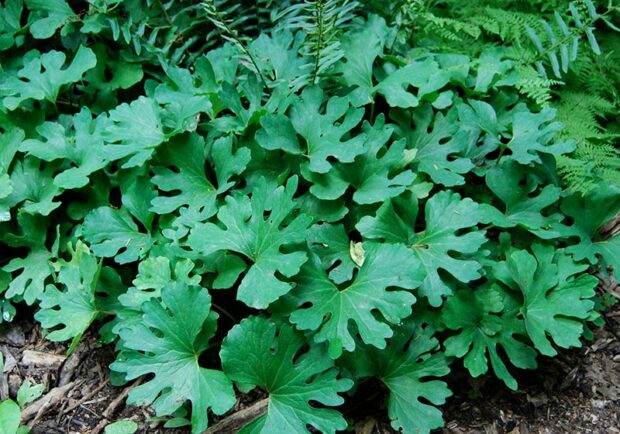
Bloodroot (Sanguinaria canadensis)
Despite an all-too-brief week or two of blooms, bloodroot is well worth planting. During a warm spell in late April, it appears out of nowhere. The cupped, scalloped leaves with their red sap are quickly followed by white-petaled flowers with gold stamens (centers). Our favorite variety (‘Flore Pleno’) has doubled flowers and fewer stamens. The double form seems much more vigorous and stays in growth much longer than the single form. Unfortunately, the doubled bloodroot seems more prone to rotting and must be divided regularly to avoid this. Grow bloodroot in deciduous shade.
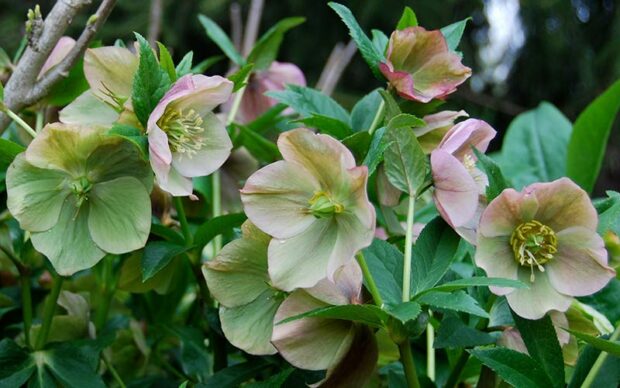
Lenten rose (Helleborus orientalis)
The popularity of hellebores rivals hostas for the premier carefree perennial for shade to part sun. Plus, they are resistant to deer. They are one of the first perennials to bloom in our gardens and can continue blooming for months. The large showy flowers come in many different shades of red, pink, purple and white. They are truly perennial, lasting for decades and are tough as nails through periods of heat, humidity and drought. Their tough, glossy leaves also last all summer and well into the winter.
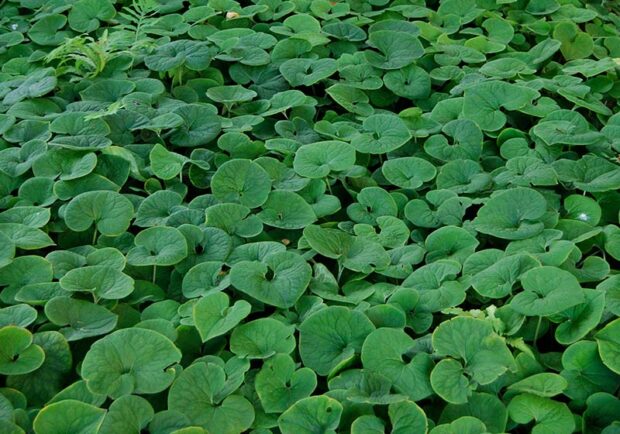
Wild ginger (Asarum)
Sturdy, easy and handsome groundcovers for shade, asarums acquired the wild ginger name because of the ginger-like smell that the roots give off when cut. They love organically-rich, moisture-retentive soil that is a bit acidic and has good drainage. Hardy to zone 3, our native species (Asarum canadense) is easy and spreads quickly without being invasive. European wild ginger (Asarum europaeum) is more showy with thick, glossy, dark green and leathery leaves, and is hardy to zone 4. It is a favorite, making a big shiny patch over the years. Everyone wants to also try the very handsome Asarum shuttleworthii ‘Callaway’ from Callaway Gardens in Georgia. It’s slow and expensive, but has striking patterns on the leaves. Some books say it’s hardy to zone 5 and some say zone 6. All I know so far is that it’s beautiful and growable in southeastern Michigan.
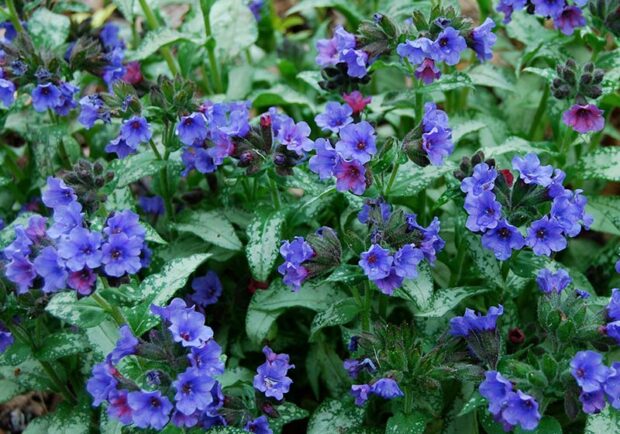
Lungwort (Pulmonaria)
Lungworts are old-fashioned perennials that are grown both for their early spring blooms of pink and blue and for their silver leaves that brighten shade gardens all summer. They make a good groundcover for shade because they form large clumps, but grow slowly enough to not be considered invasive or aggressive. They prefer some morning sun and if enough moisture is provided, even full sun. Like all woodland plants, a humus-rich, well-drained soil is best. Slugs and powdery mildew can be minor problems. The Chicago Botanic Garden did years of testing on over 30 varieties, considering disease resistance, hardiness, flowering period length and general adaptability. Among others, they recommended the following varieties: ‘Majeste,’ ‘Mrs. Moon,’ ‘Little Star,’ ‘Roy Davidson,’ and ‘Benediction.’
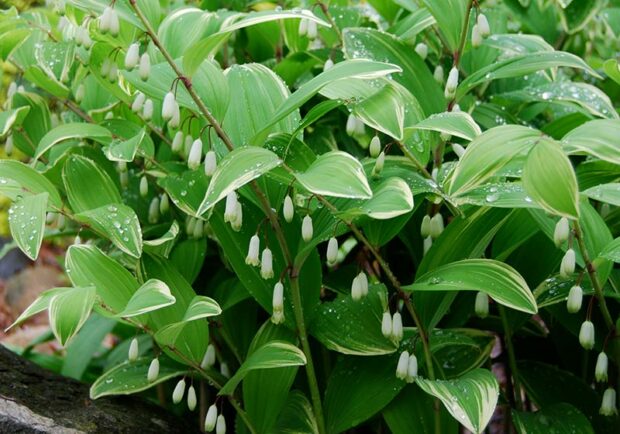
Variegated Solomon’s seal (Polygonatum odoratum ‘Variegatum’)
Several species of Solomon’s seal are native to Michigan woodlands and all add architectural interest to any shade garden with their graceful arching stems and fragrant pendulous flowers. Our favorite has creamy white variegation on the leaf margin and grows 30 inches tall and 12 inches wide. Over the years, clumps 3 to 6 feet wide can slowly form, so give it some space.
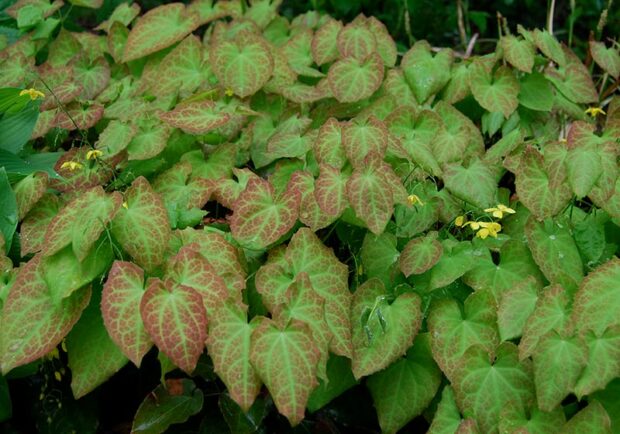
Barrenwort (Epimedium)
While not ranked as one of the showiest groundcovers, barrenworts have many virtues. For starters, deer avoid nibbling on them. Known as a low-growing groundcover for shade, they are tough enough to take even afternoon sun if they are grown in organically-rich, well-drained soil. They spread slowly so are not at all invasive and have attractive, mottled foliage and small but attractive, orchid-like blossoms in the spring (some people will shear last year’s tired foliage in early spring so that the flowers are more visible). Epimedium grandiflorum‘ Lilafee’ and ‘Rose Queen’ are classic favorites.
Richard Tuttle co-owned and operated Saguaro Nursery & Gardens in Whitmore Lake, MI.
Related: Janet’s Journal – Double Your Perennials, Double Your Fun
Elsewhere: The last word on watering perennials

Leave a Reply